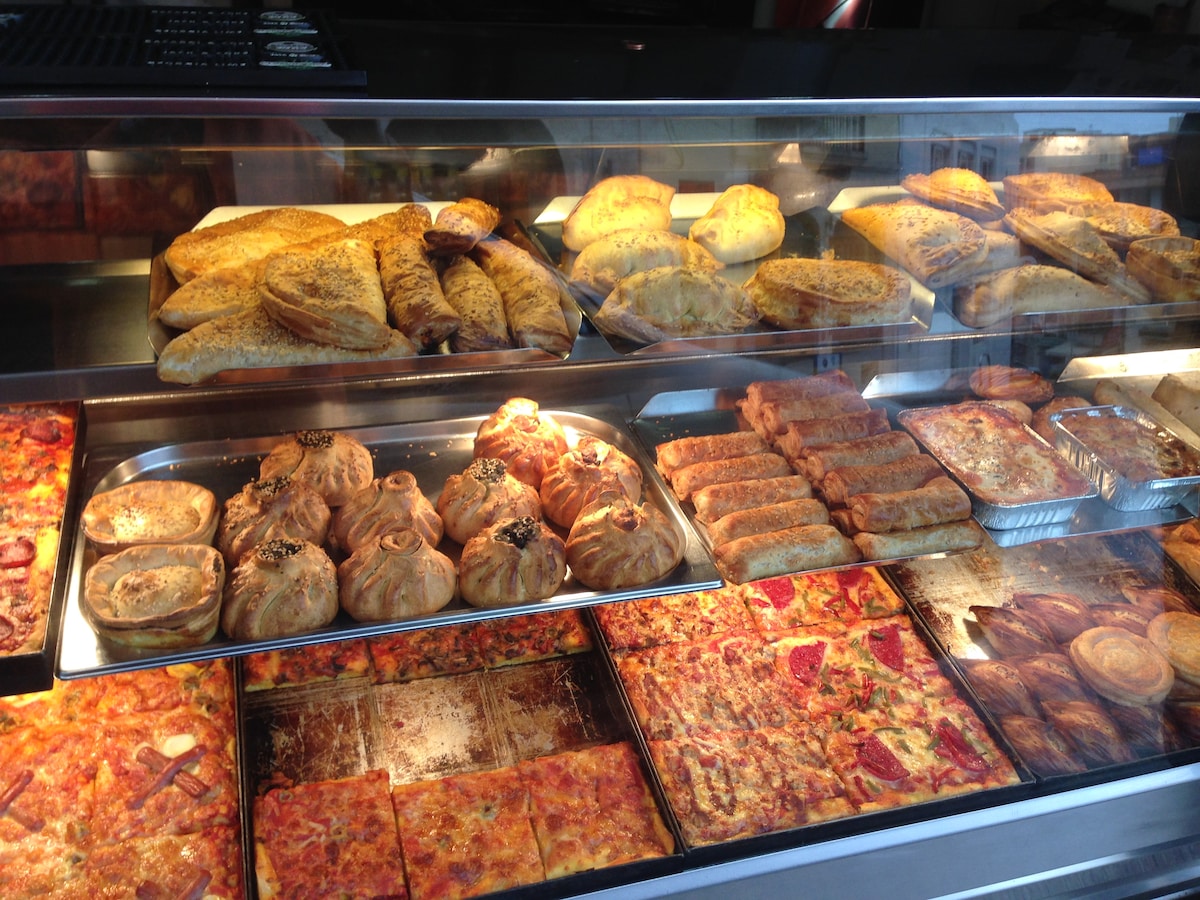Let me let you in on a secret. You can't. Once you've tasted proper Maltese bread from Gharghur, no other bread will ever match up. And forget making it at home, because it's all about the oven!! There's something about those massive stone ovens that you see in all the bakeries in Malta, that bakes the bread in an incredible way that imbues them with a distinct flavour that I've never been able to replicate. I think it's to do with them never being cleaned...that way flavour can be passed on from generation to generation of bread.
Ok...I know it's not actually the ovens that do all the work. Maltese bread is so fabulous because it's a type of sourdough, made from a starter (natural yeast) that has been built up over years and years. Flavour comes from the development of the yeast over time, and apparently different bakeries throughout the country have their own 'secret recipe' starter - hence the different varieties of Maltese bread.
So how do you make a starter? It's pretty simple, and I recommend Paul Hollywood's version if you want to try it out yourself. But be warned, it takes a while to develop a good starter, and it will die a death if you neglect it for more than a few days. I suppose you can say that it's worth it if you really miss Maltese bread, but I have an alternative solution.
If you need a sourdough...go to the supermarket - they sell it there. It's nothing like ftira but it is really tasty and makes great toast.
What I can recommend, it you want to make delicious bread at home, and you want something a bit more exciting than a white loaf, go for ciabatta or olive&rosemary focaccia. They're absolutely my favourite and rather Mediterranean. Here's the recipes:
Ciabatta
500g strong white bread flour
380g water
15g yeast
12g salt
10 tbsp olive oil
Mix half the flour with all the water and half the yeast. Leave for half an hour or until the yeast has clearly activated and created some bubbles in the mixture
Combine the rest of the ingredients with the initial mixture. Knead (or use the dough hook on your mixer) until the gluten has developed and the dough is super elastic and stretchy
Place in an oiled bowl and cover with cling film, and place in a warm place. Leave for six hours or overnight if possible. It should rise by a substantial amount.
When risen, tip onto a flour surface and shape, handling it as little as possible. Try not to let any air escape from the dough, as all those air bubbles are what make it so beautifully ciabatta-like.
Place on a floured baking tray, and put in a 200C fan pre-heated oven, for 45 minutes, and then lower to 180C for another twenty minutes.
Place on a wire rack to cool. Et voila!
 |
| My first, and certainly not last attempt at ciabatta. I think it looks quite rustic |
Olive & Rosemary Focaccia
500g strong white bread flour
380g water
15g yeast
12g salt
10 tbsp olive oil
many olives (green, black or both)
much rosemary
As above, create a starter allowing the yeast to activate, and then add the rest of the flour and yeast, the salt, the chopped olives and two tbsp olive oil
Leave the dough to rise until double its original size and then knock back on a floured surface. Place the dough on a floured baking tray and flatten out across the tray. Use your fingers to make dimples in the dough, stick rosemary into the dough in random places and drizzle with oil
Leave to rise for a further half an hour and then place in a 150C pre-heated oven until golden-brown (about 40 minutes). Leave to cool on a wire rack.
 |
| Olive and rosemary focaccia. I put some sea salt on the top before cooking, and more olive oil post cooking |


